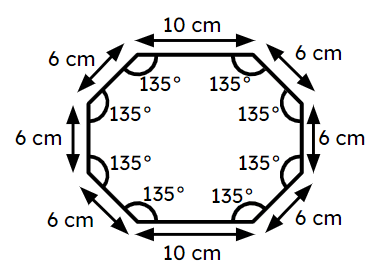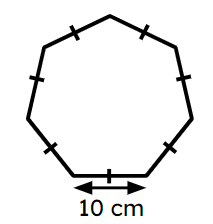Myths about teaching can hold you back
- Year 10
- Higher
Checking and securing understanding of polygons
I can recognise and name polygons with five or more sides and recognise the difference between regular and irregular shapes.
- Year 10
- Higher
Checking and securing understanding of polygons
I can recognise and name polygons with five or more sides and recognise the difference between regular and irregular shapes.
These resources will be removed by end of Summer Term 2025.
Switch to our new teaching resources now - designed by teachers and leading subject experts, and tested in classrooms.
These resources were created for remote use during the pandemic and are not designed for classroom teaching.
Lesson details
Key learning points
- The prefix is derived from Ancient Greek.
- A regular polygon has sides that are all equal and interior (inside) angles that are all equal.
- An irregular polygon has sides that are not equal or interior (inside) angles that are not equal.
Keywords
Polygon - A polygon is a flat (2D), closed figure made up of straight line segments.
Regular - A regular polygon has sides that are all equal and interior (inside) angles that are all equal.
Irregular - An irregular polygon has sides that are not equal or interior (inside) angles that are not equal.
Common misconception
The name for a shape only applies to the regular version of that shape. E.g. An irregular pentagon is just a shape, as pentagons must have 5 equal sides.
The name of a shape is known based on the number of sides and these do not have to be regular.
To help you plan your year 10 maths lesson on: Checking and securing understanding of polygons, download all teaching resources for free and adapt to suit your pupils' needs...
To help you plan your year 10 maths lesson on: Checking and securing understanding of polygons, download all teaching resources for free and adapt to suit your pupils' needs.
The starter quiz will activate and check your pupils' prior knowledge, with versions available both with and without answers in PDF format.
We use learning cycles to break down learning into key concepts or ideas linked to the learning outcome. Each learning cycle features explanations with checks for understanding and practice tasks with feedback. All of this is found in our slide decks, ready for you to download and edit. The practice tasks are also available as printable worksheets and some lessons have additional materials with extra material you might need for teaching the lesson.
The assessment exit quiz will test your pupils' understanding of the key learning points.
Our video is a tool for planning, showing how other teachers might teach the lesson, offering helpful tips, modelled explanations and inspiration for your own delivery in the classroom. Plus, you can set it as homework or revision for pupils and keep their learning on track by sharing an online pupil version of this lesson.
Explore more key stage 4 maths lessons from the Angles unit, dive into the full secondary maths curriculum, or learn more about lesson planning.

Licence
Prior knowledge starter quiz
6 Questions
Q1.An equilateral triangle has __________ equal angles.
Q2.A rhombus always has __________.
Q3.A rectangle always has __________.
Q4.A square always has __________.
Q5.A square has length 5 cm. Its perimeter is cm.
Q6.A rhombus has a base of length 5 cm. Which statement is true about its perimeter?
Assessment exit quiz
6 Questions
Q1.A polygon has sides that are all equal and interior (inside) angles that are all equal.
Q2.An polygon has sides that are not equal or interior (inside) angles that are not equal.
Q3.Which quadrilaterals are always regular?
Q4.Why is the octagon in the image not regular?

Q5.The perimeter of the heptagon is cm.



